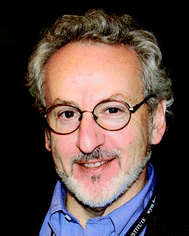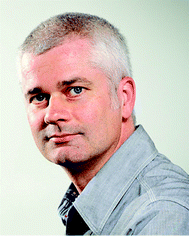Organs on Chips 2013†
David J. Beebeab, Donald E. Ingbercde and Jaap den Toonder*f
aUniversity of Wisconsin Carbone Cancer Center, Madison, WI 53705, USA
bDepartment of Biomedical Engineering, University of Wisconsin-Madison, Madison, WI 53705, USA
cVascular Biology Program, Boston Children's Hospital and Harvard Medical School, Boston, Massachusetts 02115, USA
dWyss Institute for Biologically Inspired Engineering at Harvard University, Boston, Massachusetts 02115, USA
eHarvard School of Engineering and Applied Sciences, Cambridge, Massachusetts 02139, USA
fDepartment of Mechanical Engineering, Eindhoven University of Technology, P.O. Box 513, 5600 MB Eindhoven, The Netherlands
 David J. Beebe | David J. Beebe is a Professor and Associate Chair for Research and Faculty Development in the Department of Biomedical Engineering, and Co-Leader of the Tumor Microenvironment Program in the UW Carbone Cancer Center and a John D. MacArthur Professor at the University of Wisconsin-Madison. He is the recipient of the IEEE EMBS Early Career Achievement Award, the Lab on a Chip, Royal Society of Chemistry/Corning, Pioneers of Miniaturization Prize, the Romnes Award at UW-Madison and is a Fellow of the American Institute for Medical and Biological Engineering. In addition, Dr Beebe is a founding Scientific Editor of Integrative Biology. David’s current research interests center on the understanding and application of micro scale physical phenomena to understand cancer biology (e.g. stromal–epithelial and cell–matrix interactions) through improved in vitro models, to improve cancer diagnosis/monitoring and to advance global disease diagnostics. |
 Donald E. Ingber | Donald E. Ingber, MD, PhD is the Founding Director of the Wyss Institute for Biologically Inspired Engineering at Harvard University, Judah Folkman Professor of Vascular Biology at Harvard Medical School and Children’s Hospital Boston, and Professor of Bioengineering at Harvard School of Engineering and Applied Sciences. He has made major contributions to cell and tissue engineering, microsystems engineering, and nanobiotechnology, as well as cell biology, mechanotransduction, angiogenesis, and cancer research. His team strives to identify design principles that govern the formation and control of living systems, and to use this knowledge to develop novel bioinspired therapeutics, materials and microdevices. By combining approaches from molecular cell biology, chemistry, physics, engineering, computer science, magnetics, and optics, Ingber has helped to develop multiple new nano- and micro-technologies, including human ‘Organs on Chips’, as well as engineered tissues and cancer therapeutics that have entered human clinical trials. |
 Jaap den Toonder | Jaap den Toonder is full professor and Chair of the Microsystems group at Eindhoven University of Technology. Jaap den Toonder studied at the Delft University of Technology and got his Master's degree in Applied Mathematics in 1991 (cum laude). He received a PhD degree (cum laude) from the same university in 1996. In 1995, he joined the Philips Research Laboratories in Eindhoven, The Netherlands, where he started working in the field of the mechanics of solid materials. He worked on a wide variety of applications, such as ceramic capacitors, optical storage systems, IC low-k materials, RF MEMS, soft electronics, biomedical devices, polymer MEMS, and microfluidics. In 2008, he became Chief Technologist, leading the R&D program on (micro)fluidics, and (starting in 2011) materials science and engineering. He was involved in research programs on molecular diagnostics, lab-on-chip, immersion lithography, and energy applications. Next to his main job at Philips, Jaap den Toonder was a part-time professor at the Materials Technology group of the Eindhoven University of Technology between 2004 and 2013. His current main research interests are: microfluidics, out-of-cleanroom micro-fabrication technologies, mechanical properties of biological cells and tissues, nature-inspired micro-actuators, Organs on Chips. Jaap den Toonder has (co-)authored over 75 scientific papers, as well as over 40 patent applications. He was a member of the Editorial Board of Lab on a Chip from 2009 to 2013. |
This themed issue focused on ‘Organs on Chips’ is unique because its transdisciplinary focus involving microsystems technology cuts across both the Lab on a Chip and Integrative Biology journals. The issue includes a comprehensive collection of research and review articles highlighting research and technology developments at the leading edge of this new field that combines approaches from cell biology, physiology and tissue engineering with microsystems engineering approaches, and particularly microfluidics, to fabricate microsystems containing living cells that recapitulate tissue and organ-level functions in vitro.
Organ on Chip technology represents one of the most exciting developments at the interface between biology and engineering. This development was enabled by the ability of microchip manufacturing techniques to control substrate feature size, shape and topography on the same scale (nm to μm) that living cells explore and inhabit in our bodies. Using these fabrication approaches, it has been possible to create microfluidic devices to precisely position living cells under fluid and air flows, and to uniquely recapitulate key structures and functions of in vivo tissues and organs. These microorgans typically mimic a minimal functional unit of a living organ (e.g., a portion of an alveolus or kidney tubule) rather than a whole organ; however, they do recapitulate organ structure and function because they recombine two or more tissues, recreate tissue–tissue interfaces, and expose them to their physiologically relevant chemical and mechanical microenvironment. The ability to control flow and apply dynamic mechanical stimulation makes it possible to keep cultures viable over long periods of time, promote higher levels of differentiated function, and as a result, to mimic organ-level physiology and pathophysiology in vitro.
Organ on Chip microsystems offer unprecedented possibilities to create in vitro models of healthy human tissues as well as human diseases and drug metabolism, and as such have the potential to revolutionize many facets of healthcare. In particular, the development of Organs on Chips will have a tremendous impact on drug discovery and development, and could permit analysis of pharmacokinetics and pharmacodynamics (PK/PD) in vitro because of the presence of dynamic flow. These biochips also could potentially replace cell and animal models that are currently being used across much of biomedical research, which are costly, time-consuming, ethically questionable, and often fail to predict results in humans. In fact, the inability of current models to effectively mimic human physiology is one of the main reasons why development of drugs has become so inefficient, expensive (a billion dollars), and time consuming (up to 10 years).
The field of Organs on Chips is truly multidisciplinary, combining biology with engineering, chemistry, materials, and physics. Driven by developments in these various research disciplines, and by the need for better in vitro human disease models, the field is advancing rapidly. Early examples of Organs on Chips that have been reported in the literature in the past few years include, lung-, intestine-, lymph node- and vasculature-on-a-chip, among others. These are being used to study physiology, pathophysiology, to discover drug targets, develop drugs, identify toxicities, and find novel ways to deliver drugs. The continued advancement of this field is clearly evidenced by the collection of articles in this themed issue, which includes critical reviews on new directions, including cancer on a chip, body on a chip, and regeneration on chip, as well as on the key importance of scaling issues, systems biology, and toxicity testing for this field. Original research articles included in the issue feature new technological developments, and applications involving a variety of Organs on Chips, including lung, kidney, gut, hair, liver, vasculature, and heart. These contributions confirm that research on the subject of ‘Organs on Chips’ is not only at the cutting-edge, but also that there has been real progress in the development of in vitro organ models that are more and more physiologically relevant for the study of human health and disease. We look forward to the continued development of this field and its translation into practical use.
Footnote |
| † All opinions are those of the authors and do not reflect the views of Lab on a Chip or the Royal Society of Chemistry. |
| This journal is © The Royal Society of Chemistry 2013 |
